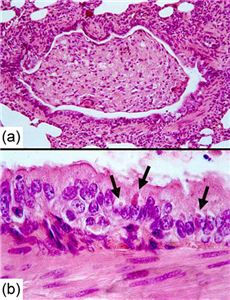The History of Animals in Space
- Kay Nagasato
- Jul 25, 2021
- 4 min read
Updated: Mar 31, 2022
Since the beginning of space exploration, animals, including fruit flies, ants, cats, frogs, jellyfish, and dogs, have been sent to space to study survivability and the potential for eventually sending humans into space.
To date, a total of 32 monkeys have flown into space, some successful and others not. Many of these monkeys gained significant amounts of attention from the media after their journeys. Albert II became the first monkey in space on June 4, 1949, but he died on re-entry when the parachute to his capsule failed. Two other monkeys, Albert III and IV, also died after rocket failure. On September 20, 1951, a monkey named Yorick and 11 mice survived a flight of 236,000 feet on an Aerobee missile in New Mexico, gaining a large amount of media attention. On May 22, 1952, two monkeys, Patricia and Mike, successfully flew in an Aerobee nose section. Gordo, a squirrel monkey, was launched 600 miles high on December 13, 1958, but died after a flotation device failure. Two monkeys, Able and Miss Baker, were launched together on May 28, 1959, by the U.S. on a Jupiter missile and flew 300 miles high, returning unharmed.

While the U.S. mainly sent monkeys and primates to space, the USSR used dozens of stray dogs for their space program. From 1951 to 1966, at least four dozen dogs were used in the Soviet space program. The Soviet R-1 series rockets carried nine dogs altogether between 1951 and 1952, with three dogs flying twice. Each flight took two dogs sealed in airtight containers that would be recovered by parachute. On August 15, 1951, Dezik and Tsygan were launched and successfully retrieved, becoming the first suborbital canine astronauts. In September 1951, Dezik was launched again, this time with Lisa, but this flight was unsuccessful and the two dogs died. Shortly afterward, Smelaya and Malyshka were launched into space and landed successfully. The first dogs to go into orbit and return from space alive were Belka and Strelka, who were launched by the Soviet space program on August 19, 1960. Two Russian dogs, Veterok and Ugolyok, were launched into space on February 22, 1966, and orbited for a record-breaking 22 days.

The most well-known animal in space is undoubtedly Laika the dog, who became the first animal to orbit around the Earth aboard the Soviet spacecraft Sputnik 2 on November 3, 1957. Laika was a young stray found in Moscow who was chosen by Soviet scientists because they believed a homeless animal was best equipped to endure the cold, hunger, and harsh conditions of space. Despite this, Laika’s death in space was expected due to inadequate oxygen and food supplies. Laika was chosen amongst several other candidates after a series of endurance trials and medical examinations for her calm temperament and grace under pressure, being described as “quiet and charming.” Despite her expected death, Laika’s spacecraft still carried various devices designed to keep her alive, including an oxygen generator, a heat-activated fan, and enough food for seven days. After approximately 2570 orbits, Sputnik 2 returned to Earth on April 14, 1958, and disintegrated upon re-entry. When the news of Laika’s death initially fell, her cause of death was unclear. However, in 1999, several Russian sources stated that Laika died after a failure in Sputnik 2’s temperature controls.

On January 31, 1961, a chimpanzee named Ham was part of the U.S.-led Project Mercury that aimed to test whether various tasks, such as pulling levers, could be performed in space. Ham was trained for 18 months before being sent into space at 5800 mph for 16 minutes, and he was able to successfully complete his tasks before returning to Earth. The findings of this project were instrumental towards the launching of the first American in space, Alan Shepard. Additionally, France sent the first cat into space on October 18, 1963. Scientists monitored Felicette’s condition throughout the 15 minute flight through electrodes implanted throughout her body. She reached an altitude of 100 miles and landed safely but was euthanized months after her trip so scientists could examine her brain. Felicette is the only cat to have ever survived a space launch.


Many other animals have been sent to space in the name of science. In 1973, Arabella the spider became the first to spin a web in space. In the late 1990s, ten newts received eye surgery and were sent to space to study how a newts’ ability to regenerate tissue was affected. A cockroach named Hope became the first creature to conceive in space after giving birth to 33 cockroaches in a Foton-M satellite in 2007. In 2017, healthy mouse babies arose from mice sperm that was hosted on the ISS for nearly 300 days in 2013-2014, suggesting that sperm for other species can be hosted off Earth in case of catastrophe. Animals contribute valuable information to space exploration and have allowed for significant advances to be made in the field. But is the cost of all these animals’ lives worth these scientific advances? Moreover, where do we draw the line when it comes to sacrificing life for science?
Sources Cited
Dohrer, E. (2017, May 31). Laika the Dog & the First Animals in Space. https://www.space.com/17764-laika-first-animals-in-space.html
History of dogs in space. (n.d.). Retrieved July 24, 2021, from https://stacker.com/stories/3538/history-dogs-space
Lewis, A. (2019, June 26). How newts transformed our understanding of space travel. https://envirobites.org/2019/06/26/how-newts-transformed-our-understanding-of-space-travel/
Todd Messer, Claire Rojstaczer, and Steve Garber, & 08., S. A. 10. (n.d.). [No title]. Retrieved July 24, 2021, from https://history.nasa.gov/animals.html
%20copy.png)



Comments